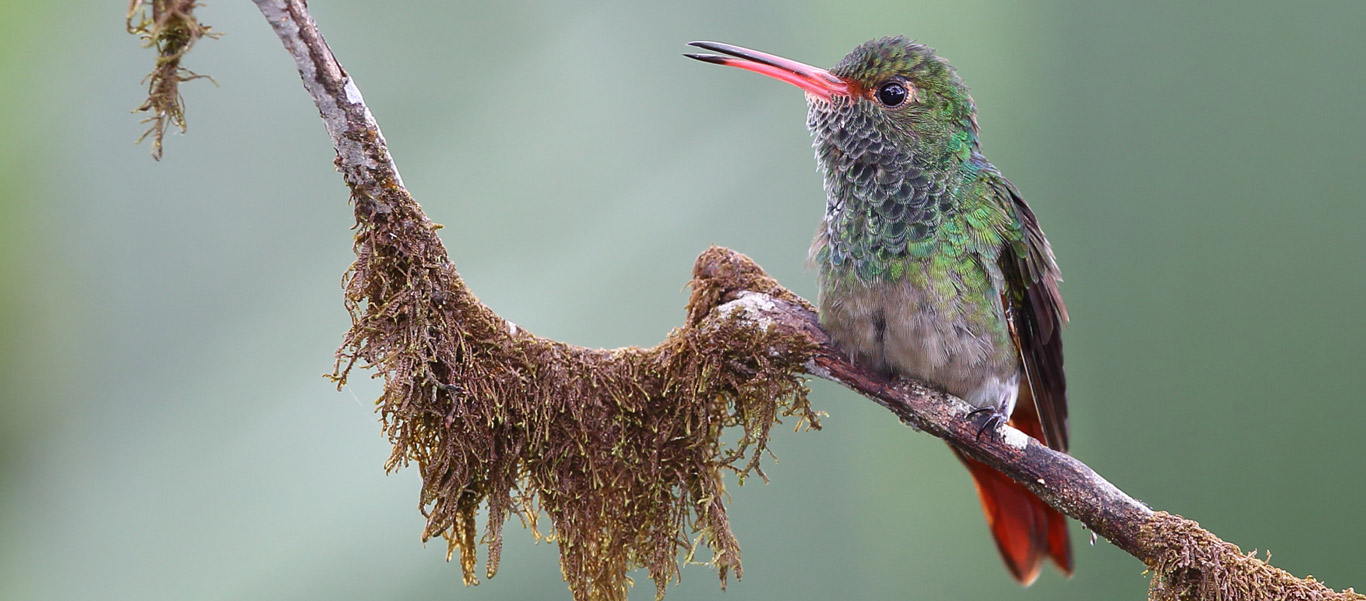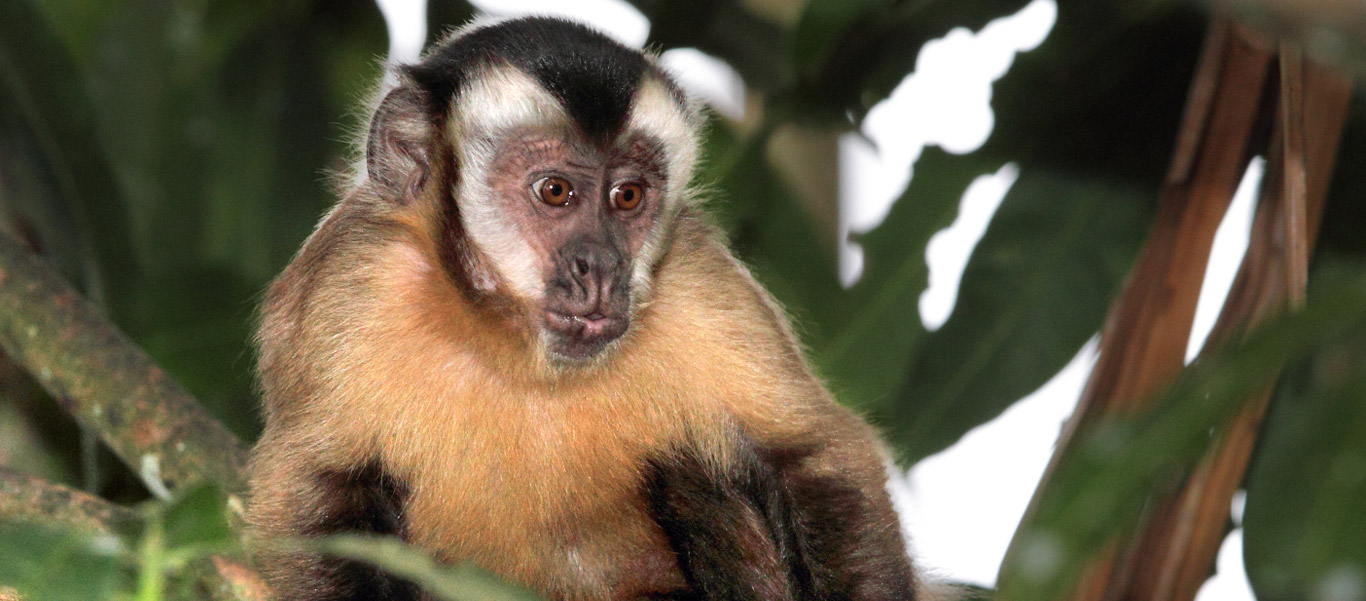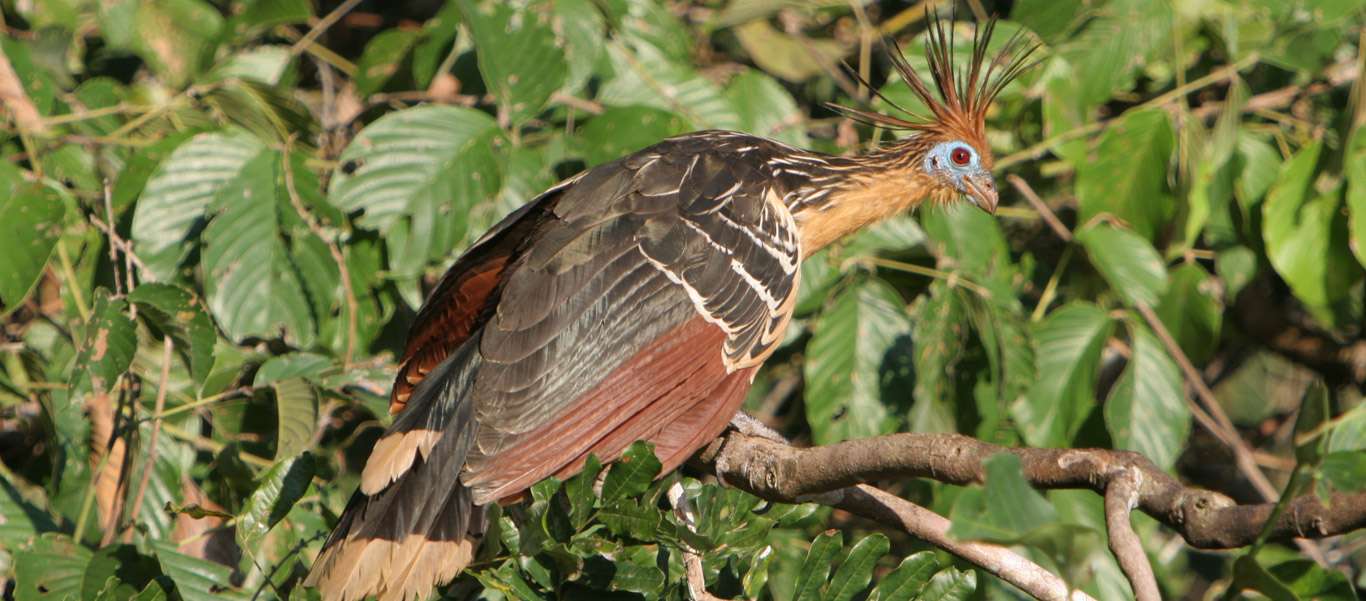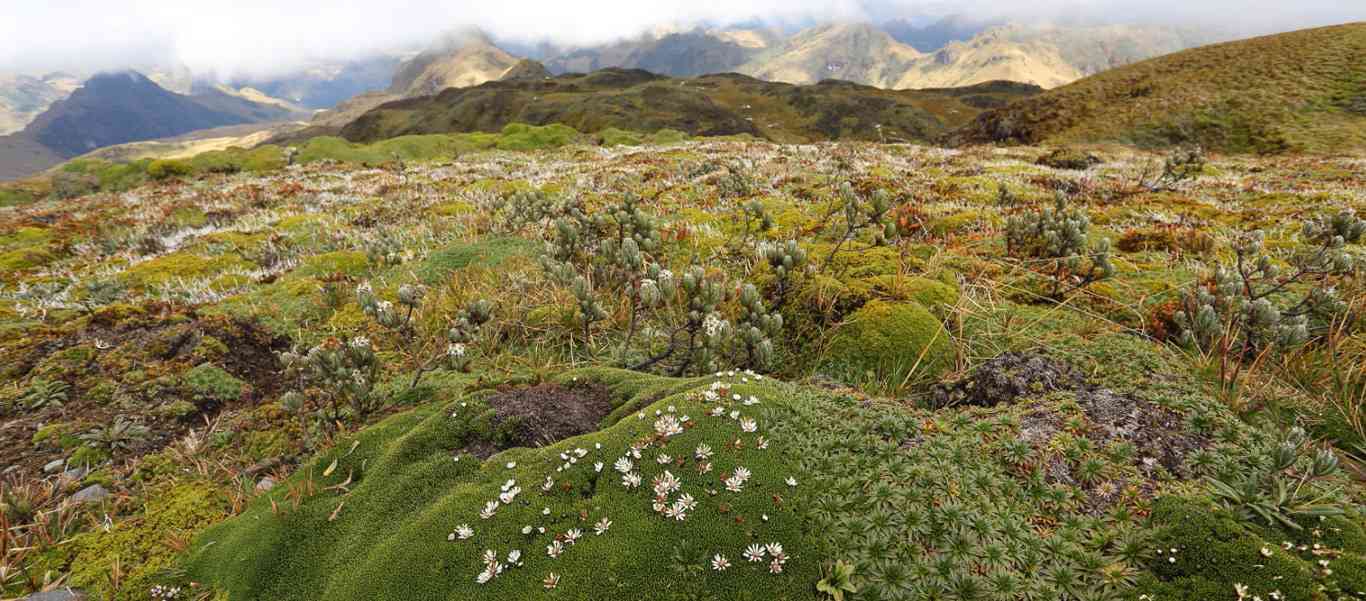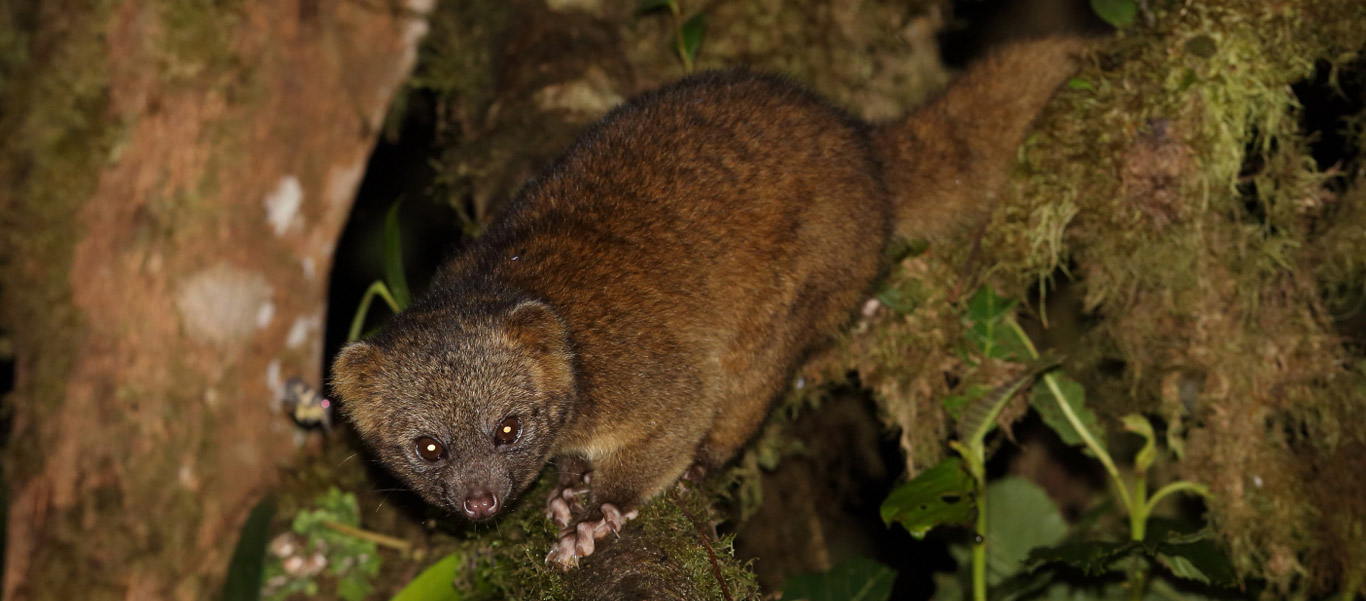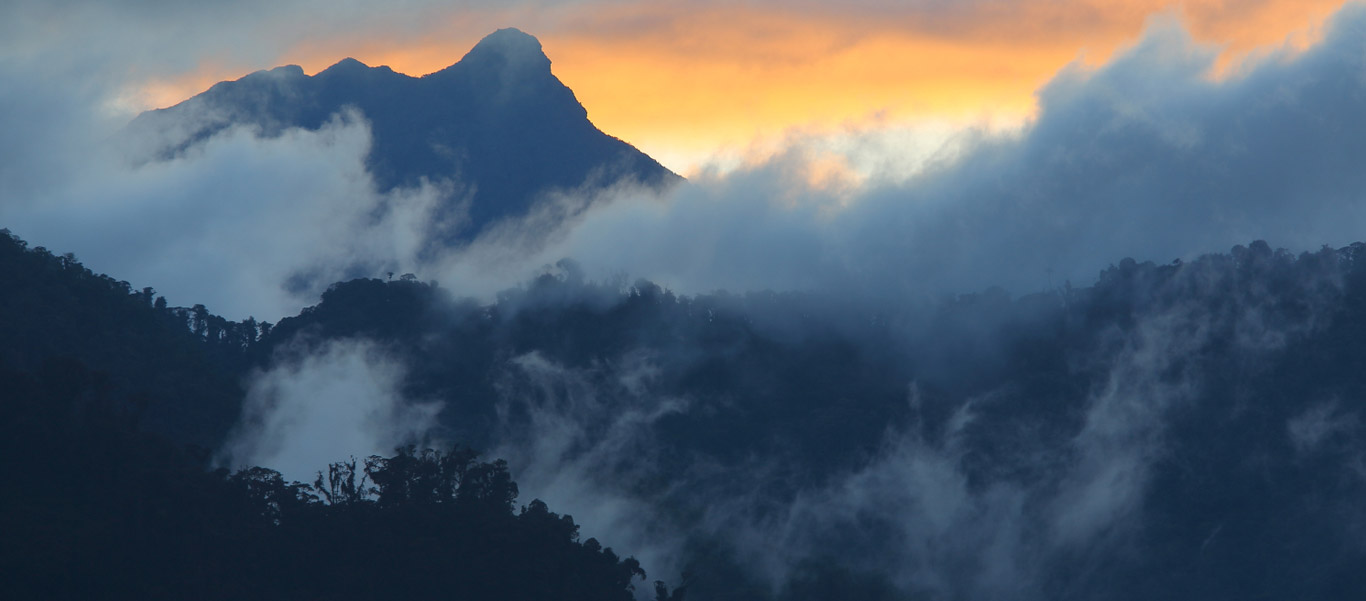Ecuador
Ecuador Adventure Tours
If Earth had an epicenter of terrestrial biodiversity, it would lie in Ecuador. Straddling the Andes at the Equator, this tiny South American nation is blessed with extreme natural diversity. Bizarrely, despite this richness, Ecuador’s mainland has long been neglected by general wildlife enthusiasts, perhaps eclipsed by the country’s even more legendary attraction, the Galápagos. Our expedition samples the richest transect of all, traversing the orchid and bromeliad-laden cloud forests of the Western Andes via the dry, rain-shadow inter-Andean valley to the impossibly diverse East Andes, finally ending in the richest environment of them all, the great Amazon basin…. A dream for the botanist and the birder, this is the ultimate combination of Andes and Amazon on the great South American continent.
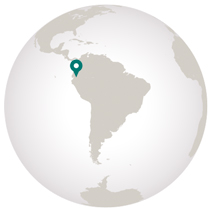
Destinations
- Travel by Air
- Travel by Road
- Travel by Boat
- Travel by Bullet Train
- Travel by Rail
- Travel by Dog Sled
-
Tuesday, April 14: Quito
Evening arrival into Quito, Ecuador’s capital city, then transfer to Hotel Sebastian in the colonial heart of town for a welcome briefing and overnight.
-
Wednesday, April 15: Tandayapa Valley
Situated at an altitude of 11,000 feet in the scenic Avenue of the Volcanoes, Quito has a brisk spring-like climate, year-round. After breakfast, we climb slowly westwards up the flank of Volcan Pichincha, the landscape ever greener as we leave the arid inter-Andean valley behind. Our first experience of Ecuador’s extraordinary diversity begins at Yanacocha, an area of temperate forest at tree line. Dwarfed by the altitude, gnarled and festooned with mosses and orchids, this so-called elfin forest offers an initial taste of some of the avian phenomena for which the Neotropics are so justly famous. Hummingbirds reach the zenith of their evolution in Ecuador, with over 100 species represented. Another thrilling aspect of Andean birding is the formation of mixed-species flocks and we should encounter our first groups of high-altitude fruit-eaters, perhaps comprised of bulky Hooded Mountain-Tanagers, striking Golden-crowned Tanagers and brilliant Scarlet-bellied Mountain-Tanagers. Cresting the west slope of the Andes, we’ll gradually descend into the magnificent Tandayapa Valley, which is entirely blanketed in temperate cloud forest, and arrive in the afternoon at Bellavista Lodge for an overnight stay. The dramatic discovery of the Olinguito, a carnivore entirely new to science, made global news in mid-2013 and tonight we have a chance to see this attractive animal first-hand, with individuals visiting the bird feeders after dark to peruse the fruit offerings.
-
Thursday, April 16: Mindo
Tandayapa boasts one of the most magnificent dawn choruses imaginable, with caroling Grey-breasted Wood-Wren and the impossibly ethereal melody of Andean Solitaire well-near drowned out by a plethora of woodcreepers, foliage-gleaners, brush-finches and the harsh croaking of the spectacular Plate-billed Mountain-Toucan. We’ll mix our activities this morning between surveying flocks at the edges of this rich temperate forest and occasionally dipping in along a trail to try to see one or two of the more interesting understory dwellers, such as Tanager Finch or the devilishly elusive but charismatic Ocellated Tapaculo. Returning to the lodge, we’ll dedicate time to appreciating and photographing the bewildering array of hummingbirds attracted to the feeders. More than 20 species are possible here, in a day, amongst them such gems as Gorgeted Sunangel, Buff-tailed Coronet, the tiny Purple-throated Woodstar and two species renowned for their mind-blowing tails: the exquisite Violet-tailed Sylph and dainty Booted Racket-tail. After lunch, we’ll continue down the west slope to Septimo Paraiso in the Mindo Valley, our base for three nights.
-
Friday, April 17: Mindo Area
This morning we’ll dedicate to one of the most unusual bird spectacles on Earth: the feeding of antpittas by Angel Paz. Long considered amongst the most elusive, and hence desirable, of all Neotropical bird families, the antpittas are shy denizens of tropical forest undergrowth. By combining a stroke of genius with months of sheer hard work, Angel has succeeded in habituating Giant, Yellow-breasted, Moustached and Ochre-breasted antpittas to handouts of earthworms and, if all goes according to plan, you will not only see but perhaps even be able to photograph these four species of feathered phantoms in a morning! Angel’s property lies in the subtropical zone, at an altitude of around 4,500 feet, and fruit feeders here are a photographer’s dream, attracting Crimson-rumped Toucanet, dozens of gaudy Blue-winged and Black-chinned Mountain-Tanagers, as well as the multi-hued Toucan Barbet. A final feature of Angel’s property is a lek of Andean Cock-of-the-Rock, one of the world’s most brilliantly plumaged birds. To watch these huge, bright orange cotingas posturing and prancing and squealing at their dancing arena is one of the quintessential Neotropical experiences. Overnight at Septimo Paraiso.
-
Saturday, April 18: Choco Lowlands
Between the Andes and the Pacific coast lies a region of lowland and upper tropical rainforest known as the Choco. Amongst the wettest places on Earth, with some sites receiving over 20 feet of annual rainfall, the Choco is also some of the richest forest on the planet, with floral diversity matched only by western Amazonia. Today we seek some of the special birds of this region, including the striking Stripe-billed Aracari. Tanagers are a particularly conspicuous feature of these forests, with some mixed flocks comprising over a dozen species, amongst them such dazzling birds as Golden-hooded, Emerald, Blue-whiskered, Scarlet-and-white, Blue-necked, Grey-and-gold and Scarlet-browed tanagers, often joined by smaller frugivores like Green Honeycreeper and the dapper Scarlet-breasted and Yellow-tufted dacnises. Of all the Choco’s birds, however, none is so enigmatic, so elusive and so sought-after as the Banded Ground Cuckoo. An inveterate follower of army ant swarms, this mythical bird had been seen by almost no ornithologists until a tiny population was located at a private reserve near Mindo called Un Poco del Choco. The presence of the cuckoos is entirely determined by the whereabouts of the nomadic ants but we’ll certainly make enquiries during our time in the area and will make a concerted effort to experience this exquisite bird if they are present. Overnight at Septimo Paraiso.
-
Sunday, April 19: Quito
After a final morning enjoying the birds of the Western Andes, we’ll head back to Quito in time for lunch, stopping at the Mitad del Mundo, or “Center of the Earth,” monument at the Equator en route. First settled by the Spanish in the mid-16th century, Quito has a rich colonial history, with an abundance of magnificent architecture. Explore the cobblestone streets, plazas and colonial churches of Quito’s Old Town this afternoon. Dinner and overnight at Hotel Sebastian.
-
Monday, April 20: Antisana National Park
Having savored a transect of the Western Andes, we’ll now commence our exploration of Eastern Ecuador with a day on the slopes of the scenic, glacier-capped Volcan Antisana. Most famous as Ecuador’s last refuge of the iconic Andean Condor, Antisana’s high páramo, or alpine tundra, grasslands also support populations of White-tailed Deer, Andean Fox and the scarce Mountain Tapir, although seeing the latter here would take a healthy dose of luck. More likely in these open habitats are Black-faced Ibis, the handsome Carunculated Caracara and Aplomado Falcon. At an attractive lake at the foot of the volcano, we may find the dainty Silvery Grebe, Andean Teal and the scarce Ecuadorian Rail. In the late afternoon, we’ll head for Papallacta Pass, crossing the saddle between Antisana and the massive bulk of Volcan Cayambe, to overnight at Guango Lodge.
-
Tuesday, April 21: Cayambe-Coca National Park
The main arterial route between the Amazon lowlands and the capital, Papallacta Pass provides easy access to a rich mosaic of elfin forest, groves of twisted Polylepis trees and pincushion bogs on the lower flanks of Cayambe, and this will be our focus for the morning. On a clear day, the views from the 15,000-foot-high pass can be breathtaking, with Antisana’s glaciers gleaming in the sunshine and Cayambe’s extensive boggy páramo stretching to the horizon. Careful scanning of this páramo may reveal a foraging Spectacled Bear or even the bulky mass of a Mountain Tapir, far below. Strange, ptarmigan-like Chestnut-bellied Seedsnipe inhabit these high bogs, and the air is filled with the clear whistles of Tawny Antpittas, bold birds whose conspicuous habits are a disgrace to their tribe! We’ll also investigate the elfin forest edges and Polylepis groves, watching for the high-altitude specialist hummer, Ecuadorian Hillstar, elegant Red-rumped Bush-Tyrant, Red-crested Cotinga, and small groups of the beautiful Giant Conebill. Guango’s feeders offer another marvelous opportunity for hummingbird photography, with the selection here including Collared Inca, Tyrian Metaltail, and that most extreme example of specialization in the bird world, the incomparable Sword-billed Hummingbird. Overnight at Guango Lodge.
-
Wednesday, April 22: San Isidro
This morning, we’ll follow the valley ever lower down the eastern Andes to San Isidro Private Reserve, at about 6,500 feet above sea level. A remarkable conservation success story, San Isidro protects almost 5,000 acres of bamboo-rich subtropical forest that serves a vital function as a corridor connecting Antisana National Park’s temperate forests with the lower, outlying foothill forests of Volcan Sumaco. Overnight at San Isidro Lodge.
-
Thursday, April 23: San Isidro
Dawn breaks at San Isidro to the bizarre, electronic-sounding display song of Wattled Guans echoing across the forest, and with luck we may actually see this scarce, turkey-like bird. The lodge’s lights attract large numbers of moths, in turn providing a free meal to a plethora of insectivorous birds. After breakfast, a network of trails gives us access to the exquisite forest interior, where huge canopy trees are bedecked with orchids, bromeliads and “Old Man’s Beard” lichens. We’ll watch for a wide range of wonderful birds here, representing the full spectrum of Neotropical avian diversity, such as Black-billed Mountain-Toucan, White-capped Parrot, the glittering Golden-headed Quetzal, Green-and-Black Fruiteater, Chestnut-breasted Chlorophonia and Golden-collared Honeycreeper. Long-term protection in the area has meant that raptors are still plentiful, and by late morning both Barred and White-rumped hawks are frequently seen soaring overhead. In the quiet of the afternoon, we’ll focus on the hummingbird feeders, where bold Chestnut-breasted Coronets usually dominate but up to 15 species, including the spectacular Long-tailed Sylph, are regular. As night falls, we’ll make every effort to find two nocturnal birds for which San Isidro has become famous: the very scarce and localized Andean Potoo and the strange “San Isidro Owl”, a creature of uncertain specific identity that shares features of both Black-banded and Black-and-white owls. Overnight at San Isidro Lodge.
-
Friday, April 24: Sacha Lodge
We depart early this morning on the final leg of our Ecuadorean adventure, to explore the richest environment of them all, the Amazonian lowlands. After winding down through the Andean foothills to Francisco de Orellana, more commonly known as Coca, a frontier town on the Napo River, we’ll board motorized canoes and head downstream towards Sacha Lodge. The Napo is Ecuador’s largest tributary to the Amazon, a broad, muddy, slow-moving river with large river islands and extensive sand bars. These vegetated islands and the adjacent river banks are dominated by distinctive big-leafed balsa and many-fingered Cecropia trees, often draped with colonies of pendulous oropendola and cacique nests and providing perfect perches for Brown Jacamars, Swallow-winged Puffbirds and Amazon Kingfishers. Flocks of Blue-headed Parrots and Orange-winged Amazons squawk overhead, while Large-billed Terns, Drab Water Tyrants and White-banded Swallows skim low over the water. In the late afternoon we arrive at Sacha Lodge, our base for the next four nights.
-
Saturday – Monday, April 25-27: Sacha Lodge
Sacha Lodge is built on stilts at the edge of a picturesque oxbow lake fringed by stately Mauritia palms, and we’ll begin the morning in dugout canoes, exploring the flooded forest around the lake. Boisterous Brown Capuchin and Common Squirrel monkeys often traverse the palms, while Hoatzins, strange, prehistoric-looking vegetarian birds, hiss from waterside swamps. A narrow channel snakes beneath this species-rich varzea forest, ending at a tower in a giant Kapok tree that affords unrivalled views of the forest canopy. Sacha boasts an incredible bird list of almost 600 species, a product of its wide array of Amazonian habitats, from pristine terra firme lowland forest to secondary successional habitats on river islands, and we’ll be sure to explore this extraordinary variety during our time here. A dawn excursion to a known “clay lick” exposes us to one of the Amazon’s most fabulous avian spectacles, with hundreds of Blue-headed Parrots, Mealy and Yellow-crowned Amazons, and Cobalt-winged Parakeets descending to gather minerals. After dark, the forest offers an entirely different suite of creatures and spotlighting excursions may reveal nocturnal mammals such as Nine-banded Long-nosed Armadillo, Kinkajou and the attractive Night Monkey, a plethora of insects and such spectacular birds as Spectacled and Crested owls.
-
Tuesday, April 28: Quito
After a final Amazonian dawn chorus, we return upriver to Coca in time to fly back up to the highlands. Dinner and overnight at the Garden Hotel San José, near the Quito Airport.
-
Wednesday, April 29: Quito
Transfer to the airport this morning for international flights homeward.

